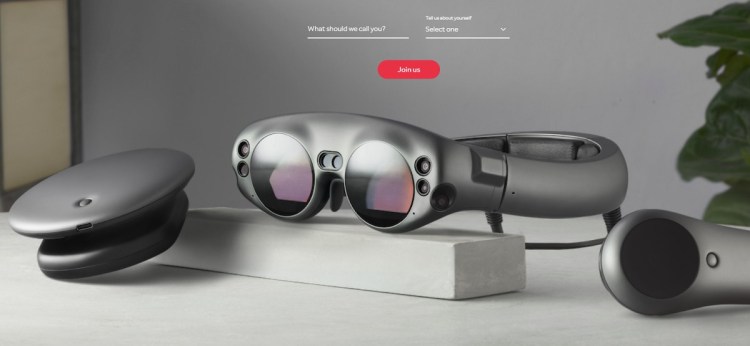2017 was a year full of surprises for the augmented reality industry. Arguably the single biggest development was the emergence of ARKit for iOS devices and ARCore for Android devices. Digi-Capital forecasts that the install base for mobile AR could hit 900 million by the end of 2018.
The sudden emergence of mobile AR on a mass scale, while exciting, raises numerous questions. What will become the killer app? Will even see one? Will consumers adopt an entirely new means of interaction with 3D objects overlaid in space? Who will define the best practices for product design and user experience for this emerging medium? I’ve interviewed eight investors who have provided their insights on risks and opportunities for the AR industry and startups entering the space.
Here’s what I learned.
Don Stein, managing director of Candela Partners

Above: Don Stein
VB: Which opportunities in AR do you see being promising in 2018?
Stein: I’d say there are four main categories we are interested in:
- “Pick and Shovels”: developer toolkits and platforms that will enable and power the first generation of consumer AR applications
- “Enterprise Onramp”: technologies and products that enable companies to begin using AR for key “horizontal” functions such as marketing, customer support, and product design.
- Vertical Solutions: specialty B2B use cases that an AR headset enables that were previously impossible with a PC alone, for industries such as construction, health care, public safety, etc.
- Consumer Mobile: we’re watching traction from consumers around apps built with AR Kit and AR Core to see what killer app might emerge
VB: What do you see as risks and challenges for AR in 2018?
Stein: Timing is the single biggest risk right now, particularly for mobile AR. It’s critical for all stakeholders in this market to be objective and thoughtful about what is and isn’t working effectively. It’s possible that mobile AR won’t be where mass-market AR takes off, and that we’ll have to wait for AR glasses to become ubiquitous.
VB: Tips or advice for early stage AR startups entering the market now?
Stein: For enterprise AR startups: there’s already money to be made right now. The key is to stay patient in the sales process and try to find companies that already have an interest and a thesis around augmented reality. Making ties with the right investors who can introduce you to serious clients will save you a lot of time.
For consumer AR startups: Don’t get overhyped on the large install base. Watch the numbers around mobile AR growth, focus on adoption rates, and be objective about what does and does not constitute a real opportunity.
Greg Castle, founder and managing partner at Anorak Ventures
VB: Which opportunities in AR do you see being promising in 2018?

Above: Greg Castle
Castle: AR will require immense data sets to be transferred. This includes high quality 3D models, being sent back and forth between low-powered devices, and potentially over wireless infrastructure. This challenge presents a substantial opportunity for advancements in rendering technology and communication protocols.
The industry will also require the seamless digitization of real world objects, done at scale. Retail will be transformed by AR/VR. In the same way that consumers wouldn’t purchase an ecommerce product without product photos, we will eventually live in a world where consumers will expect to interact with a 3D model of a product they’re interested in.
VB: What do you see as risks and challenges for AR in 2018?
Castle: Changing consumer habits is incredibly difficult. People today are not accustomed to using their smartphones for AR. This presents a challenge in that the best practices for user experience will have to be defined from scratch and then adopted at scale.
VB: Tips or advice for early stage AR startups entering the market now?
Castle: Solve real problems. Don’t get caught up in the hype cycle around the size of the mobile AR market. Identify real opportunities by solving problems, so that you can build a sustainable business.
Toni Schneider, partner at True Ventures and former CEO of Automattic

Above: Toni Schneider
VB: Which opportunities in AR do you see being promising in 2018?
Schneider: Broadly speaking, platforms and frameworks for developers to build AR applications that enable multiuser experiences, at scale, across devices. Ease-of-use will be particularly important for these platforms: both for developers to deploy, and for users to experience and interact.
VB: What do you see as risks and challenges for AR in 2018?
Schneider: Timing is the biggest risk. Mobile AR will be a great platform for experimentation, although it may ultimately end up as a stepping stone to AR smart glasses. The enormous install base that immediately exists is an obvious strength, as developers can build apps that can reach scale. The long-term issue, however, is that smartphones are probably not the right interface for AR.
Platform companies face the dual challenges of developers needing to adopt their frameworks effectively while also considering the end-user experience. Thus, another challenge is whether developers can create AR applications that are compelling to users, and how quickly those users adapt to mobile AR user interfaces.
VB: Tips or advice for early stage AR startups entering the market now?
Schneider: Use your funding wisely and make it last a long time. It’s unclear what the final form factor for AR will be when this market reaches maturity, but it’s unlikely it will be smartphones. Be thoughtful and create a strategy that will enable you to endure as the market continues to evolve.
Moreover, you won’t be able to improve your product if you don’t have actively engaged users. You should be looking into areas where the market is growing. It may be helpful to look at some success stories from VR, such as BigScreen and their social movie watching experience. Find something that people clearly want to do today, not ten years from now, and create applications that focus on use cases that people will begin using right away.
Ryan Gembala, founder and managing partner of Pathbreaker Ventures
VB: Which opportunities in AR do you see being promising in 2018?

Above: Ryan Gembala
Gembala: We still haven’t found the killer use case or application for smartphone AR. That said, that killer app will probably have these traits: ease of use, aligns with an existing daily activity, and solves a core need that improves with more usage. These sound obvious, but the issue is complex. What constitutes an easy-to-use experience for smartphone AR? Why would you use an AR app several times a day? What compels you to keep checking that app? What fundamental problem are you solving with smartphone AR that wasn’t being solved before?
A team that can build a product that solves these issues, at scale, will uncover a great opportunity for mobile AR.
VB: What do you see as risks and challenges for AR in 2018?
Gembala: Generally speaking, people have never used smartphones for AR. Thus, consumers will have a sharp learning curve regarding how to use mobile AR that might cause friction in user adoption. There needs to be a compelling use case to train this sort of habitual behavior, to create the ‘muscle memory’ among consumers for AR apps. In this sense, UX design will be critically important.
VB: Tips or advice for early stage AR startups entering the market now?
Gembala: Start narrow and do a lot of customer discovery and development. Identify an issue that is solvable with mobile AR as it exists today, for which there is a strong need with a high degree of stickiness and frequent usage. This is particularly true for mobile AR opportunities in the consumer space, although applicable to enterprise AR as well. Then, as the capabilities of the hardware and software evolve, you can evolve in line with them.
Continued on the next page.

